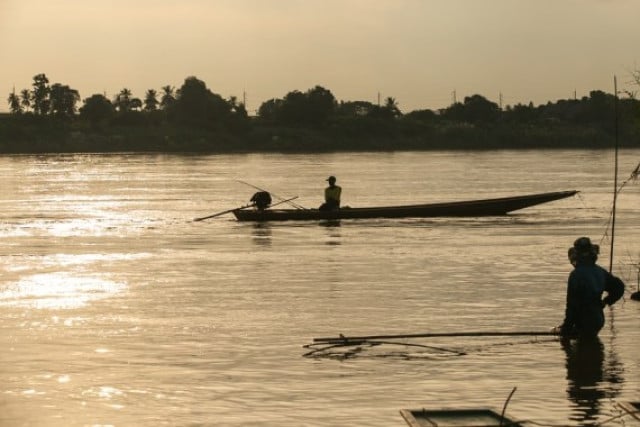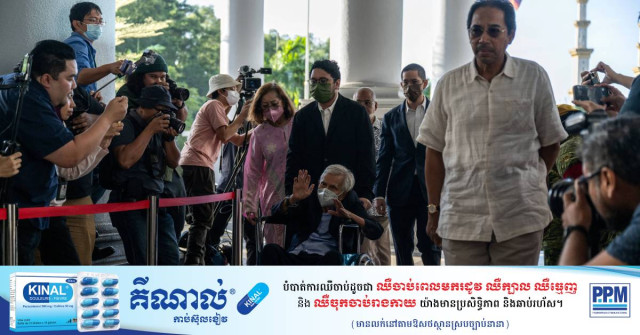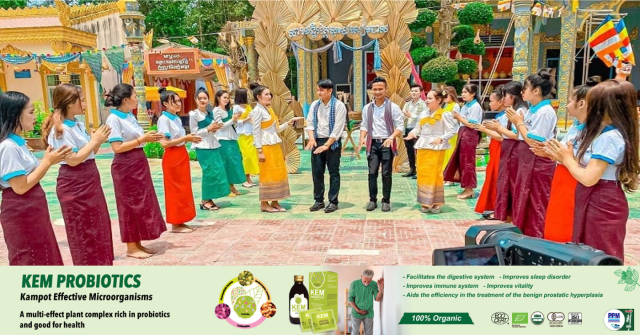Benefits and Challenges for International Tourists visiting Dili,Timor-Leste

- By Cambodianess
- January 9, 2022 12:13 PM
The island of Timor is about 700 kilometres north of the Australian coastline and lies at the most southern point of the largest archipelago in the world, Indonesia.

It is one island with two nations, separated by a land border with Timor-Leste to the East and Indonesia to the West.
The Timorese Special Administrative Region of Oecusse sits on the Indonesian coastline, about an 8-hour drive from Dili.
Timor-Leste’s capital city, Dili, has many benefits and local attractions to be the central hub for International tourists but since the country first became an independent nation 19 years ago, a well-developed Government infrastructure to support them, has not yet materialised.

Successive Governments have done a great deal of talking about how important tourism is to the country, but very little action has followed.
The Covid-19 Pandemic hit Timor-Leste nearly two years ago and its borders were closed to the outside world, resulting in International Tourism coming to a grinding halt.

It is very rare these days to see foreign tourists in Dili, however before the lockdown, some chose to enter the country overland from Indonesia, with the majority arriving at the Nicolau Roberto International Airport.
After leaving the arrival hall, SIM cards and phone credit can be purchased by passengers from two independent Internet providers, whose outlets are adjacent to the Terminal and pickup point for taxis and hotel courtesy cars.
By the time they reach their destinations, they can usually be on-line, however, this depends on whether the connection to the Internet satellite receivers is working fast or slow.

Timor-Leste’s internet service is erratic and falls far behind most of the world in regard to constant, uninterrupted upload and download speeds, which fluctuate at any time of the day or night.
The city center is a quick 15-minute drive from the airport and two different routes can be taken.
Passengers in a hurry to get to their accommodation are whisked along a main dual highway that links the Airport to the Central Business District.
The most popular way is a leisurely scenic drive along the coastal road, which snakes along the empty beaches and a calm sea on the left.
On the opposite side, many well established foreign embassies face the shoreline, with a high mountain range dominating the skyline.

The island lies east to west and most days of the year there are beautiful and quite often, spectacular sunrises and sunsets; ideal for those perfect holiday photos from a tropical environment.


Tourist accommodation is plentiful and caters for the backpacker to the high-end tourist; but prices are more expensive than most popular tourist spots in the ASEAN region.


Backpacker rates start around $20 a night and hotels with a three star rating cost $100 or more for an overnight stay.
There are no hotels that meet the requirements for a higher star rating, mainly because of poor customer service.
The Timorese culture is very laid-back and many businesses in the Hospitality Industry have difficulty finding staff who are capable of learning how international visitors expect to be treated, and put this into practice.
The port of Dili is adjacent to the CBD and is geared-up to efficiently handle the arrival and departure of international cruise ships; the result of clever planning by a group of private operators.

The larger vessels cannot dock at the Port and anchor in deeper waters.
A fleet of Tenders ferry the ship’s passengers to and from the shore.
As they step onto the pier, a local produce, food and souvenir market is set-up to give them their first taste of Timorese craft and culture.
Local charter boat companies also use the Port as a pick-up point for tourist heading to the nearby Ataúro Island, which is internationally famous for its spectacular diving locations.
Dili is by far the country’s largest city but at the same time is small and provides an ideal environment for tourists to wander the streets safely and take in the local sights and culture, day or night.
There are many small restaurants and coffee shops providing mostly Indonesian food and a spattering of other South East Asian dishes.
Traditional Timorese cuisine is hard to find.

“The infrastructure should be properly established and the hospitality community should be trained how to cook local, healthy, natural food using local ingredients that cannot be found in any restaurant. Timorese types of food for the visitor to taste once, and come back for more. Also drinks. Timorese coffee is already well known in many parts of the world, however, if visitors come and we serve them with Nescafe, cheap imported Indonesian coffee, or any other instant coffee, they will never come here again.” he said
Mr. Lemos pointed out one of the major problems in the city, “Timor-Leste is a beautiful country but the rubbish has become one of the main challenges.”
Rubbish is an eyesore for tourists and throughout the city and suburbs there are many public collection areas, which on a daily basis are quickly filled and garbage overflow onto the streets.
After heavy rains, discarded waste from many villages in the mountains is carried down a number of large rivers and canals into the sea, heavily polluting Dili’s beaches.

Another negative factor for Dili is that it does not have a sewage treatment plant.
Raw sewage, mixed with debris and discarded rubbish, flows 24 hours a day through polluted channels directly into the sea parallel to the scenic route to the city.
A significantly larger problem is when a visitor ‘gets caught short’, meaning they need a toilet in a hurry.
There are no public toilets situated around the city.
For centuries, Timorese women have been hand weaving a traditional cloth called Tais.
Tucked away in a small area not far from the city center is the Tais Market, where visitors can haggle over the price with the weavers and take home a colourful memento of Timorese culture


The nearby statue of Jesus, perched on the tip of small a mountain just outside the city limits, is ‘must-see’ for most visitors.
To get up close to this impressive religious figure, tourists are faced with a physical climb of nearly six-hundred steps to reach the top.

However, their reward is the specular panoramic view from the base of the statue

98% of Timorese people are Catholic and many religious pilgrims come to worship at a statue of John Paul ll, who came to Timor-Leste in 1986, during the 24-year Indonesian occupation of the county.

The most important sacred site in Timor-Leste is the statue of the Virgin Mary at the top of Mount Ramelau, the highest mountain peak in the land.
The journey takes around 5 hours from the city along a road that is sealed most of the way, but becomes rocky and dusty a few kilometers from the stop off point.


This visit also involves a very cold, early morning, 4-hour climb from a base camp to reach the summit, but again the 360-degree view at sunrise is spectacular.
Only a short walk from the City center is the now infamous Santa Cruz Cemetery.

In 1991, Indonesian soldiers callously opened fire on a huge crowd of unarmed people protesting the death of a young activist who was murdered outside a church, earlier that day.

More than 270 young people were shot dead inside the cemetery and countless others were injured in the deliberate attack, which was secretly filmed and smuggled out to Australia.
When it was shown to the world, an International outrage against the Indonesian occupation followed and resulted in Timor-Leste becoming an independent country eleven years later in 2002.

A Resistance Museum dedicated to the 24-year struggle is located in the City limits and adjacent to it, is a Historical Media Centre established by Max Stahl, the Australian cameraman who risked his life to film the Santa Cruz massacre.

The local currency is the US dollar and ATM machines are at the Airport and easily located throughout the city.
The only hiccup here is that all of the machines only accept cards linked to Visa.
Tourists using MasterCard cannot withdraw funds anywhere throughout the country.
The only way they can access their money it to go to the Indonesian Customs building across the border, two and a half hours away, which houses an ATM that accepts MasterCard.
On arrival back in Dili, they then have to find roadside moneychangers and convert their Indonesian Rupiah into US dollars.

Dili has an efficient mini-bus service called Microlets.
These small and normally packed buses go everywhere around the city and nearby suburbs, for the meagre price of 25 cents a trip.

For the tourist this is the easiest and quickest way to travel during the daylight hours.
Public transport does not run after sunset.
Portugal colonised Timor-Leste for over 400 years and its influence can still be seen and tasted in a few Portuguese restaurants.
Unfortunately, there not many buildings left that were constructed by the Portuguese.


Two excellent examples still standing are the Governor’s Palace and Casa Europa, both close to each other on the City’s waterfront.
When the Indonesian forces reluctantly withdrew in 1999, hundreds of buildings were burnt and destroyed by the angry soldiers, being transported by road back to West Timor.


There are still many ghostly shells of burnt-out buildings in and around the city to remind people of the past.
Dotted around Dili are several small health clinics and chemist shops called Apotek, but only one, the Stanford Clinic, offers international medical treatment for tourists, should they need urgent attention.
One delightful aspect of a trip to Dili is the warmth and friendliness of the Timorese people.
Visitors walking the streets can expect to be greeted with smiles and curiosity, especially from cheerful, inquisitive children.

Despite Portuguese being the official language, many young people are desperate to learn and practice their English and take every opportunity they can to converse with a foreigner, which again gives tourists another memorable photo opportunity.
There are still many places throughout the country where children seeing a foreigner for the first time can be an eye-popping experience.

The biggest complaint from tourists who have already visited Timor-Leste by air is the purchase of a “Visa on Arrival.
Before being allowed into the airport terminal, International travellers have to cue up outside and wait to purchase a one-month ‘Tourist Visa’ for 30 US dollars cash.
The Tourism and Hospitality industries want this to be abolished.
Airline passengers who have not arranged transport to their accommodation can expect to be surrounded and hassled by noisy taxi drivers wanting to charge a high fee for their services.
This is a virtual free-for-all.
For budget travellers, who prefer to use private public transport to help complete their Timor bucket list, this can be a very frustrating experience.
Punctuality and timetables are non-existent.
Buses destined for popular tourist spots gather at around the same time, early in the morning at a central pick-up point, however the drivers will not leave until they have enough passengers to cover their costs of the journey.
On most occasions the visitors, to whom time is limited; will arrive at the recommend departure time and spend sometimes an hour or more, sitting inside waiting for the bus to fill.
They can expect to share the bus with as many people that can fit in, sitting or standing, and a variety of animals, including chickens, small pigs and goats.















